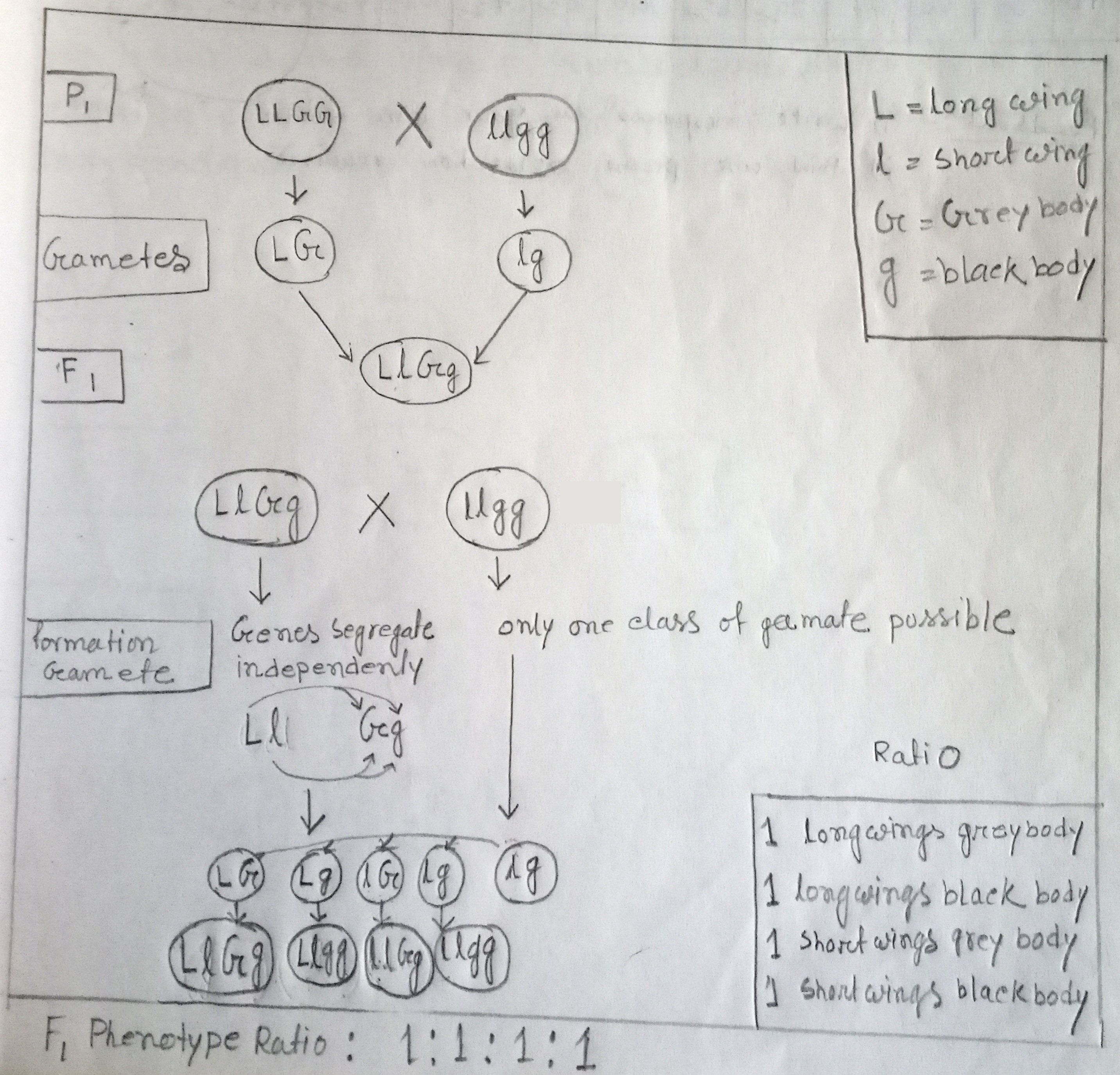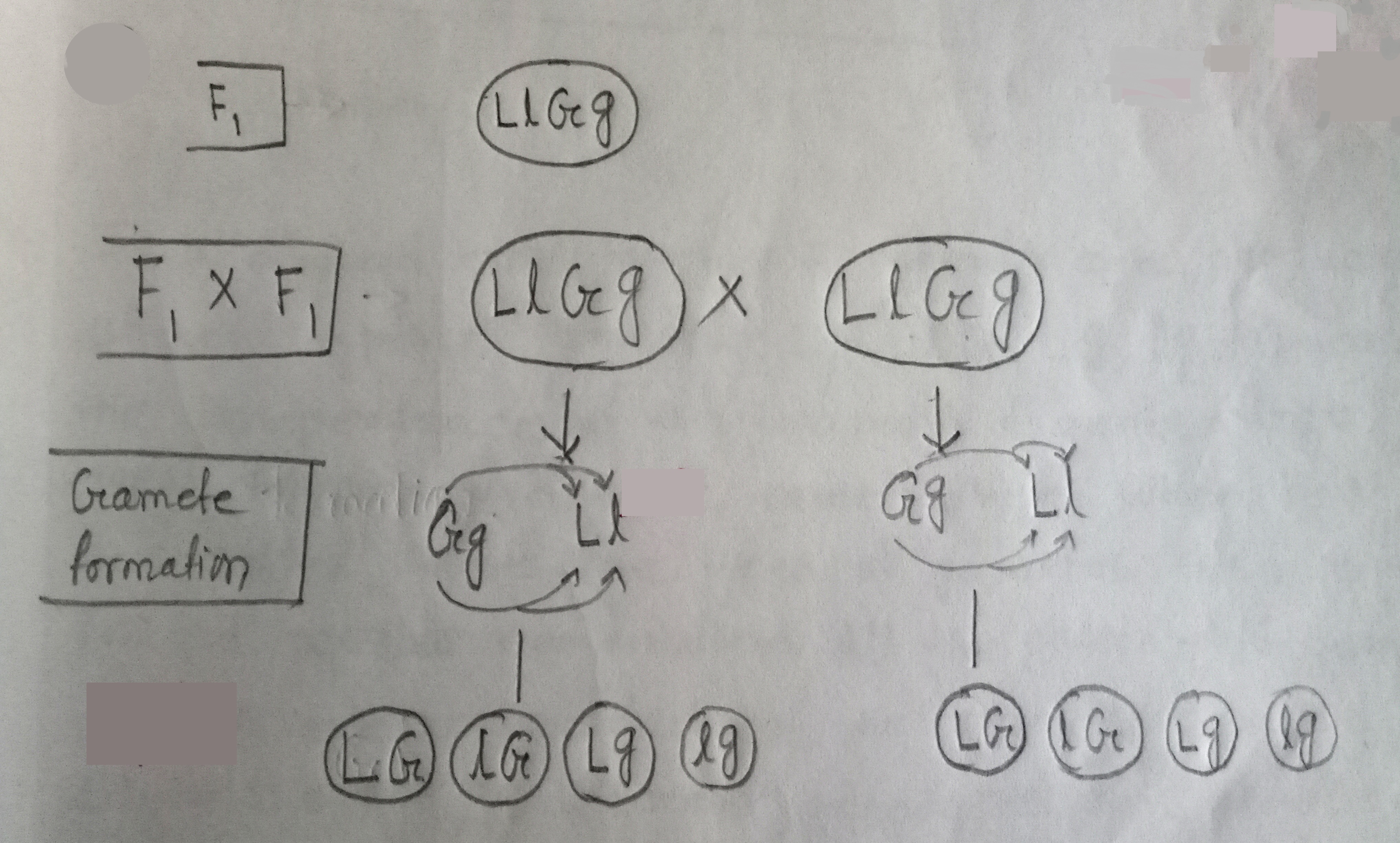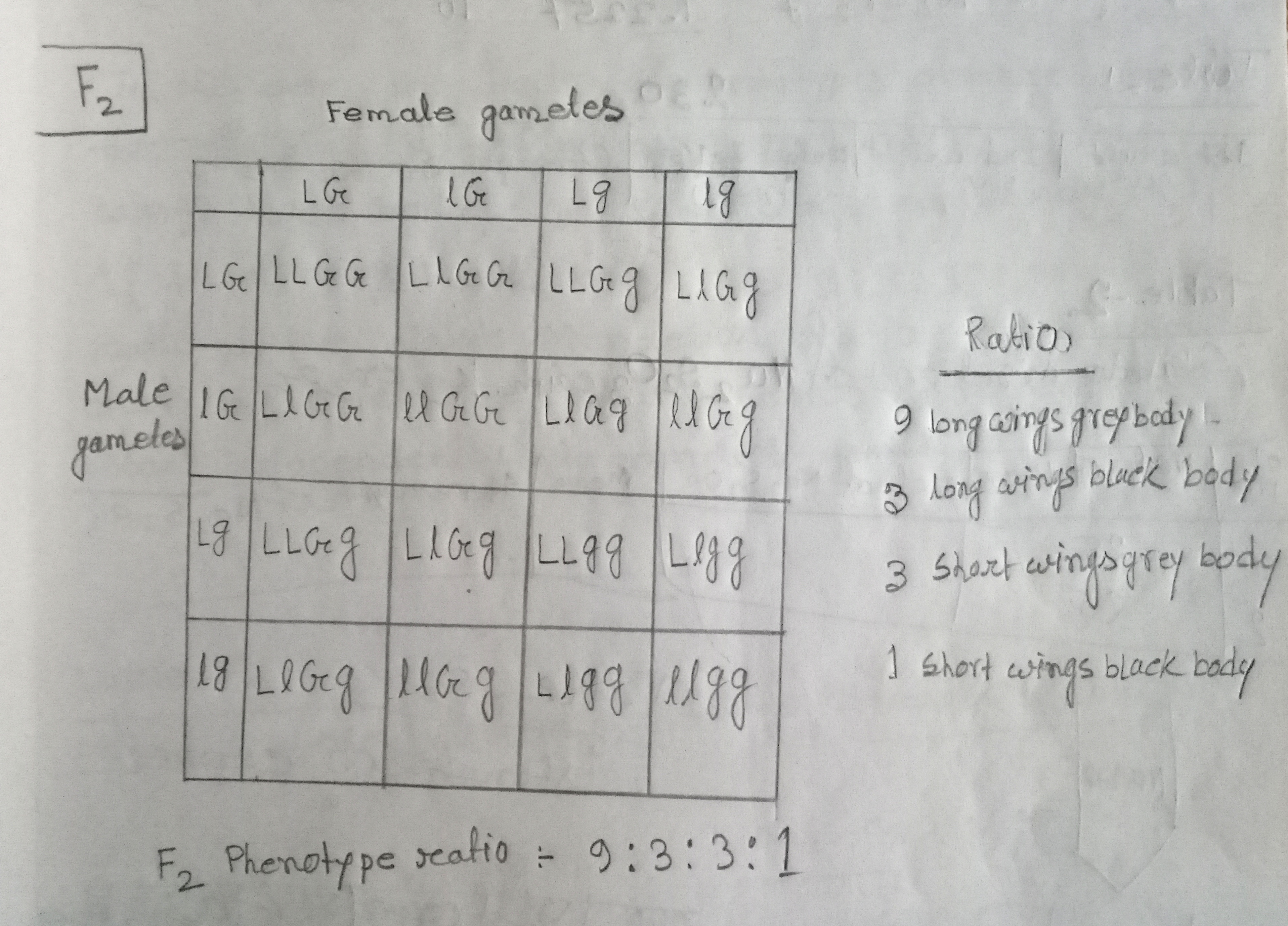In Drosophila, long wings condition (L) is dominant over short wings condition (l), & grey body color (G) is dominant over black body color (g). In crosses involving these traits, what are the most likely parental genotypes of the previous generation if the following phenotypic ratios are obtained? Give reasons. (i) 1:1:1:1 (ii) 9:3:3:1
According to the given problem in Drosophila, long wings condition (L) is dominant over short wings condition (l), & gray body color (G) is dominant over black body color (g).
(i) If we wish to know the genotype of the F1's & the F2's from a dihybrid cross, a test cross may be used.

This test cross between a heterozygous LlGg fly & a homozygous llgg fly will yield offspring with only for genotypes (LlGg, llgg, llGg, llgg) & four possible phenotypes (long wings gray body, long wings black body, short wings gray body, short wings black body). Thus, in this case, the ratio of phenotypes observed among offspring will be 1 (long wings gray body):1(long wings black body):1(short wings gray body):1(short wings black body). This 1:1:1:1 phenotypic ratio is the classic Mendelian ratio for a test cross in which the alleles of the two genes assort independently into gametes (LlGg * llgg).
(ii)


In a dihybrid cross, each of F1 parents can produce four different types of gametes: LG, lG, Lg, lg. Because of the independence of the two pairs of genes, there is an equal frequency of each gametic type. When the F1 are selfed, these four types of gametes fuse randomly in all possible combinations. All the possible 16 gametic fusions are represented on the Punnett square. In the dihybrid cross, 9 different genotypes are obtained but because of dominance, only 4 phenotypes are observed. In this case, the ratio of phenotypes observed among the offspring is 9(long wings gray body):3(long wings black body):3(short wings gray body):1(short wings black body). This 9:3:3:1 phenotypic ratio is the classic Mendelian ratio for a dihybrid cross in which the alleles of two different genes assort independently into gametes.